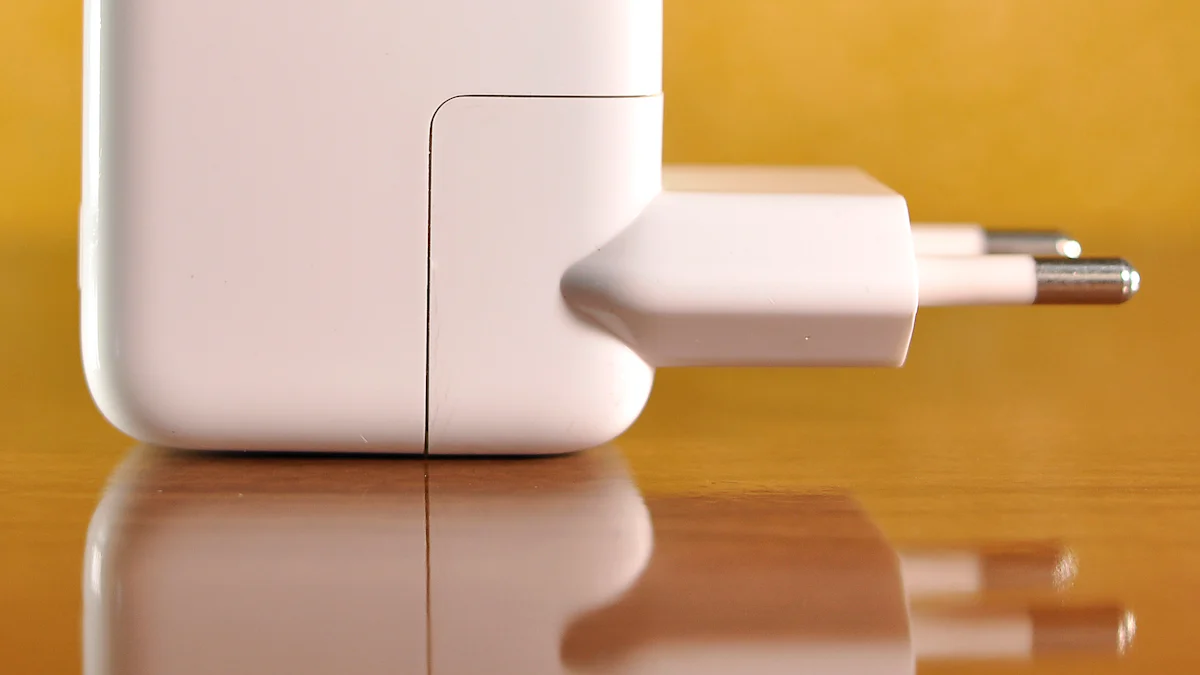
Travel Converters: Everything You Need to Know
Share
International travel often requires Travel Converters to ensure electronic devices function properly. Without proper converters, travelers may face several issues:
- Devices may not charge or work correctly.
- Electrical outlets in different countries vary in shape and voltage.
- Plug adapters are necessary for appliances without detachable plugs.
- Voltage mismatches can damage devices.
"Nothing is more embarrassing and disappointing than arriving in a new country, trying to charge your phone, only to find that your charger won’t fit in the foreign outlet."
Understanding Travel Converters
What is a Travel Converter?
Definition and Purpose
Travel Converters are essential devices for international travelers. These converters modify the voltage of an electrical outlet to match the voltage requirements of electronic devices. Without Travel Converters, devices may malfunction or suffer damage due to incompatible voltage levels.

Image Source: pexels
Difference Between Converters and Adapters
Many people confuse Travel Converters with adapters. An adapter changes the plug shape to fit into different outlets. A converter, however, changes the voltage to ensure safe operation of electronic devices. For example, American outlets operate on 110-120 volts, while European outlets use 220-240 volts. Plugging a 110-volt device into a 220-volt outlet without a converter can cause serious damage.
Types of Travel Converters
Step-Down Converters
Step-down converters reduce the voltage from a higher level to a lower level. For instance, a step-down converter can change 220 volts to 110 volts. This type of converter is useful for American travelers visiting countries with higher voltage systems.
Step-Up Converters
Step-up converters increase the voltage from a lower level to a higher level. For example, a step-up converter can change 110 volts to 220 volts. This type of converter is ideal for travelers bringing devices that require higher voltage.
Universal Converters
Universal converters can both step up and step down voltage. These versatile devices work in multiple countries and adapt to various voltage levels. DOACE Travel Converters is a popular choice for its ability to handle different voltages and its compact design.
How Travel Converters Work
Voltage Conversion
Voltage conversion involves changing the electrical output to match the voltage required by a device. Travel Converters achieve this by using transformers or electronic circuitry. This process ensures that devices receive the correct voltage, preventing damage or malfunction.
Frequency Conversion
Frequency conversion adjusts the frequency of the electrical current. Some devices require a specific frequency to operate correctly. Travel Converters with frequency conversion capabilities ensure that devices function properly in regions with different electrical frequencies.
Choosing the Right Travel Converter

Factors to Consider
Voltage Requirements
Understanding the voltage requirements of your devices is crucial. Most American appliances operate on 110-120 volts. Many European countries use 220-240 volts. Travel Converters adjust the voltage to match your device's needs. Always check the voltage specifications on your device before traveling.
Wattage Capacity
Each Travel Converter has a wattage capacity. This capacity indicates the maximum power it can handle. Exceeding this limit can cause overheating or damage. Calculate the total wattage of all devices you plan to use. Ensure the converter supports this combined wattage.
Plug Type Compatibility
Different countries use different plug types. Travel Converters often come with multiple plug adapters. These adapters fit various outlet shapes. Verify the plug type used in your destination country. Choose a converter that includes the necessary adapters.
Popular Brands and Models
DOACE Overview
DOACE is a well-known brand dedicated to providing high-quality power solutions for global users. We focus on researching and producing various types of power conversion equipment, including transformers, conversion plugs, adapters, etc., to provide safe and reliable power support for consumers' travel and daily life.
DOACE transformers have become market leaders due to their outstanding performance and innovative design. Here are some of the main features of our transformer products:
- Multi functional conversion: DOACE transformers support multiple voltage conversions, suitable for voltage standards in different countries and regions. Whether it's 110V to 220V or 220V to 110V, it can be easily handled.
- Efficient: Adopting high-efficiency voltage transformation technology, ensuring minimal energy loss during the conversion process and providing stable output voltage.
- Safe and reliable: Equipped with multiple protection mechanisms, including overload protection, overheating protection, and short circuit protection, ensuring the safety of users and equipment during use.
- Portable design: The compact and lightweight design makes the DOACE transformer very suitable for travel carrying. Whether it's business trips or leisure travel, we can provide power support for your electronic devices anytime, anywhere.
- Strong compatibility: DOACE transformers are compatible with a variety of electronic devices, including smartphones, tablets, laptops, electric toothbrushes, cameras, etc., allowing your device to work properly anywhere.
Ceptics Overview
Ceptics offers a range of reliable Travel Converters. These converters are known for their durability and safety features. Many models include built-in surge protection. Ceptics converters also come with multiple plug adapters. This versatility makes them suitable for various international destinations.
Zendure Passport III Overview
The Zendure Passport III is a popular choice among travelers. This Travel Converter features a compact design. It supports both step-up and step-down voltage conversion. The Passport III includes four USB ports for charging multiple devices. Its universal plug adapters make it compatible with outlets worldwide.
Using Travel Converters Safely

Safety Tips
Avoiding Overheating
Overheating poses a significant risk when using Travel Converters. Always check the wattage capacity of the converter. Ensure that the combined wattage of all connected devices does not exceed this limit. Place the converter in a well-ventilated area. Avoid covering it with clothes or other materials. Regularly inspect the converter for any signs of damage or wear.
Proper Usage Instructions
Follow the manufacturer's instructions for Travel Converters. Plug the converter into the outlet before connecting any devices. Verify that the voltage setting matches the requirements of your device. Use only one high-wattage device at a time with the converter. Unplug the converter when not in use to prevent overheating and potential hazards.
Common Mistakes to Avoid
Incorrect Voltage Matching
Incorrect voltage matching can damage electronic devices. Always verify the voltage requirements of your devices before using Travel Converters. Check the voltage specifications on the device's label or manual. Use a step-down converter for devices requiring lower voltage. Use a step-up converter for devices needing higher voltage.
Overloading the Converter
Overloading the converter can cause it to overheat or fail. Calculate the total wattage of all devices you plan to connect. Ensure that the combined wattage does not exceed the converter's capacity. For example, the DOACE LC-X35 100% pure sine wave 350W traveling voltage converter supports specific devices with mechanical switches and multiple outlets. Avoid connecting multiple high-wattage devices simultaneously.
FAQs About Travel Converters
Frequently Asked Questions
Can I use a converter with any device?
No, not all devices are compatible with Travel Converters. Some devices, such as laptops and smartphones, often support dual voltage. These devices can handle both 110V and 220V. Always check the voltage specifications on your device's label. Using a converter with incompatible devices can cause damage.
How do I know if I need a converter or an adapter?
Determine whether your device supports dual voltage. Devices that support dual voltage only need an adapter to fit the plug shape. Single-voltage devices require Travel Converters to match the voltage. For example, American travelers visiting Europe need converters for single-voltage devices. Check your device's manual or label for voltage information.
What should I do if my converter stops working?
First, unplug the converter and all connected devices. Inspect the converter for visible damage. Overheating or overloading can cause converters to fail. If no damage is visible, try using the converter in a different outlet. Replace the converter if it continues to malfunction. Always carry a backup converter or adapter when traveling.
Travel converters play a crucial role in ensuring electronic devices work seamlessly during international trips. Choosing the right converter guarantees safe and hassle-free travel.
"After four months of testing it in Taiwan, Japan, Portugal, England, Germany, Qatar, and Oman, I'm ready to give the DOACE Travel Converter/Adapter my stamp of approval."
Here are some final tips:
- Always check device voltage requirements.
- Opt for converters with built-in surge protection.
- Carry a backup converter for emergencies.
Selecting the right converter enhances your travel experience and protects your valuable electronics.
